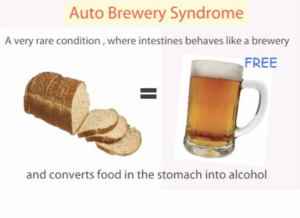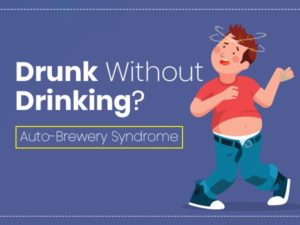Most of us only experience drunkenness — and the ensuing “rough morning” — after having had a few stiff drinks. While the alcohol may give us a pleasant “high” at first, the hangover is a harsh reminder that our bodies do not appreciate heavy partying all that much.
There are, however, people who experience intoxication and hangovers without drinking a significant amount of alcohol, or even without ingesting alcohol at all.
These people have a rare condition called auto-brewery syndromeTrusted Source or gut fermentation syndrome, in which pure alcohol (ethanol) is produced in a person’s gut after they have eaten carbohydrate-rich foods.
An excess of Saccharomyces cerevisiae — a type of yeast — in the gut is the main culprit, which leads to the fermentation process that produces ethanol.
However, researchers note that the spontaneously-produced alcohol would not be enough to land someone a drink-driving charge since it would not lead to high enough levels of blood alcohol.
However, a variation of this condition may have more severe effects.
Since the liver typically processes ethanol, people whose liver does not function properly may experience a form of auto-brewery syndrome in which the alcohol accumulates and lingers in the system for longer.
Some symptoms that accompany this condition include belching, chronic fatigue syndrome, dizziness, disorientation, hangovers, and irritable bowel syndrome (IBS).
All of these symptoms can further impact a person’s mental health and physical well-being. In an interview for the BBC in the United Kingdom, a person with auto-brewery syndrome explained how the condition affected them before they received a diagnosis:
“One minute I’m fine the next drunk suddenly. Then at times after a some carbs I ate I would be vulgar and goofy; which took over a course of days. I would be normal and bam I’m drunk.”.
Fortunately, most people can manage auto-brewery syndrome through dietary changes; by switching to foods with low carbohydrate and high protein content. A further step in treating this condition involves taking antibiotics and antifungal therapies.

